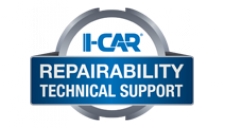
I-CAR Repairability Technical Support Portal Connects Industry Pros to OEMs
- Posted on 12 November 2014
by Society of Collision Repair Specialists (SCRS)
Prosser, Washington, November 12, 2014 - The Inter-Industry Conference on Auto Collision Repair (I-CAR) continues to promote the launch of its Repairability Technical Support (RTS) Portal, an extensive collection of resources available to help provide repair industry members with valuable information, technical support and repair solutions. Located at rts.i-car.com, the Portal offers real-time OEM information and announcements, collision repair articles, technical questions and answers and much, much more.
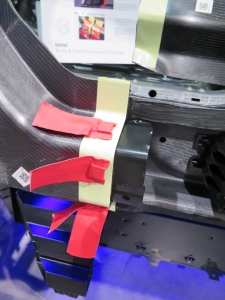
Carbon Fiber Repair On The BMW i3
- Posted on 07 November 2014
On the BMW i3 with the carbon fiber passenger cell, the question is often asked, how do we repair damage to the carbon fiber? For that answer BMW presented an overview of the repairs at the 2014 SEMA show. The simple answer is that you cannot repair the passenger cell the way that you would repair a sheet molded compound (SMC) part.

I-CAR Works to Redevelop Curriculum with Help From Collision Repairers
- Posted on 06 November 2014
This article originally appereard in Fender Bender.
Nov. 6, 2014—I-CAR has begun an initiative in which it is using real-time information from current technicians in order to provide rigorous, efficient, role-based training that makes sense for today's specialized repair professional, according to an announcement from the Society of Collision Repair Specialists.

What's A Subaru Rear Skirt?
- Posted on 04 November 2014
When it comes to repair information, vehicle makers use a wide variety of terminology for replacement parts. All of the different names can be confusing, especially when repairing a variety of vehicle makes and models.
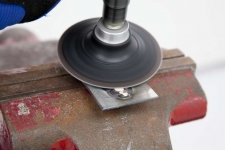
Advanced Joining Methods For Todays Vehicle
- Posted on 31 October 2014
This article originally appeared in the November 2014 edition of ABRN.
When friends and family think about the vehicles of yesteryear they often say to me "they don't build them like they used to." I tell them, you have no idea how right you are. Cars today are light years ahead of where they were just a few short years ago. It is no longer vehicles of the future we are discussing, but current vehicles on the road today, and some are being repaired like nothing has changed. With the major changes in vehicle construction, the collision repair industry will need to learn some advanced attachment methods and a new way of thinking. Lets take a look at some advanced attachment methods necessary for repair on vehicles that are on the road today.
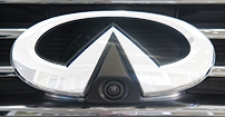
What's An INFINITI Rear Side Member Extension?
- Posted on 29 October 2014
When it comes to repair information, vehicle makers use a wide variety of terminology for replacement parts. All of the different names can be confusing, especially when repairing a variety of vehicle makes and models.

Becoming Ford F-150 Recognized Aluminum Repairer
- Posted on 28 October 2014
FAQ: What tools and equipment do I need to repair the new Ford F-150?
ANSWER: There are a wide variety of options available and you need to asses what will work for your shop.

I-CAR CEO & President Appears on Autoline
- Posted on 24 October 2014
Recently, I-CAR CEO & President, John Van Alstyne, caught up with John McElroy on Autoline to discuss vehicle light weighting and the "Technical Tsunami" that is happening in automotive industry. The entire episode can be seen on I-CAR's YouTube channel.
Here are a few excerpts from that interview.
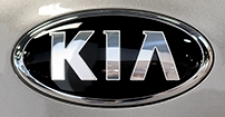
Kia Collision Repair Information: UPDATE
- Posted on 24 October 2014
In previous I-CAR Collision Repair News articles, we announced the availability of comprehensive collision repair information from Kia.

Nissan Releases Caring For Matte Paint Finish Bulletin
- Posted on 17 October 2014
We've added the 2015 Nismo GRT; Caring For And Repairing Matte Paint Finish service bulletin from Nissan North America that addresses caring for and repairing matte paint finish.

Aluminum Dust Disposal
- Posted on 15 October 2014
Recently, a collision repair professional called to Ask I-CAR, "How is aluminum dust disposed of after it has been collected in a sparkless motor vacuum?"

The Database Enhancement Gateway (DEG)
- Posted on 08 October 2014
Ever hear about the Database Enhancement Gateway (DEG)? If you haven’t, it’s a great resource. Let’s face it, sometimes an estimating system doesn't have everything in its database that is needed to write a complete damage report. Sometimes the process to replace a part is not clear; other times it may be simple human error or a computer glitch.

Is it MIG or is it MAG?
- Posted on 07 October 2014
Once people get used to calling something one thing, it's difficult to change it. To be technically accurate, whether it's MIG or MAG depends on the shielding gas.
When GMA (MIG) welding started its rise, it was often referred to simply as MIG welding. While this term is widely known, it's not technically accurate. MIG stands for "Metal Inert Gas" and is accurate when making welds using an inert shielding gas, such as 100% argon when welding aluminum. However, for most collision repairs on steel parts, we use a shielding gas that is 75% argon, 25% carbon dioxide (often called 75/25, or C-25). Because carbon dioxide is an active gas, the correct term would be metal active gas (MAG) welding.

Minimum Driveaway Time For Urethane Adhesive
- Posted on 03 October 2014
I-CAR recognizes minimum driveaway time for urethane adhesive. This is a time specification that the glass industry has agreed on when a vehicle that has had a stationary glass replacement can be released to the customer. It is when the adhesive has achieved enough strength to pass Federal Motor Vehicle Safety Standards (FMVSS) 212, windshield retention, and 208, occupant protection.

What's A Mazda Rear End Panel?
- Posted on 02 October 2014
When it comes to repair information, vehicle makers use a wide variety of terminology for replacement parts. All of the different names can be confusing, especially when repairing a variety of vehicle makes and models.
-
Toyota/Lexus/Scion Position Statement: Pre- and Post-Repair System Scanning
Thursday, 28 July 2016
As the industry continues to ask if pre- and post-repair system scanning is necessary, Toyota/Lexus/Scion provides their answer.
-
Pre- and Post-Repair System Scanning Position Statements
Wednesday, 9 January 2019
Are you wondering if a particular OEM or organization has a published position statement on pre-repair and post-repair scanning? We have compiled a list of most of the position statements on the...
-
ADAS, Calibration, And Scanning Article Hotspot
Monday, 14 January 2019
Since advanced driver assistance systems (ADAS), scanning, and calibration first started becoming relevant, members of the collision repair industry have required as much knowledge as possible on...
-
Honda/Acura Position Statement: Pre- and Post-Repair System Scanning - UPDATE
Wednesday, 22 May 2019
Honda /Acura has updated their position statement on pre- and post-repair scanning to give more clarification on what is expected for scanning.
-
Restraints Wiring Repairs
Monday, 23 May 2016
Over the past few months, we've been sharing OEM position statements on restraints wiring repairs. Now we're bringing them all together in one place for easy reference.
-
Typical Calibration Requirements For Blind Spot Sensors
Wednesday, 19 October 2016
Technicians should be aware of what’s required to keep advanced driver assistance systems (ADAS) running safely after a collision. Whether that be aiming a camera, which can cause a system to not...
-
Typical Calibration Requirements For Forward Radar Sensors
Wednesday, 12 October 2016
Technicians should be aware of what’s required to keep advanced driver assistance systems (ADAS) running safely after a collision. Whether that be aiming a camera, which can cause a system to not...
-
General Motors Position Statement: Pre- and Post-Repair System Scanning
Friday, 21 October 2016
As the industry continues to ask, are pre- and post-repair scans necessary, General Motors provides their answer.
-
FCA/Stellantis Position Statement: Pre- and Post-Repair System Scanning
Thursday, 9 June 2016
FCA/Stellantis has released a position statement related to pre- and post-repair system scanning.
-
Quickly Identifying Outer Quarter Panels w/Rolled Hem Flanges
Monday, 5 March 2018
The I-CAR best practice article, Recycled Outer Quarter Panels w/Rolled Hem Flanges has gotten a lot of interest from the collision repair industry. It’s important to know which vehicles are...
-
GM Repair Insights: Spring 2024
Monday, 13 May 2024
The spring edition of General Motors (GM) Repair Insights magazine is now available.
-
OEM Linking Pin: Kia Outer Uniside Sectioning
Friday, 10 May 2024
As part of the I-CAR Repairability Technical Support (RTS) OEM linking pin activity, we are helping to connect the collision repair industry to the vehicle makers. We’ve had technical inquiries that...
-
Calibration Research Tips: Nissan/INFINITI - Bumper Cover Replaced With Sonar Sensor Holder
Thursday, 9 May 2024
While searching for information on advanced driver assistance systems (ADAS) on an OEM repair information site, you may come across unique calibration procedures or events. These events can vary by...
-
I-CAR Just In Time: Lineman’s Glove Testing
Tuesday, 7 May 2024
Sometimes seeing is understanding, that’s why I-CAR's technical team created the Just in Time video series to guide you through a variety of collision repair topics from ADAS and EVs to repair tips...
-
OEM Emergency Response Guides: BMW/Mini
Thursday, 2 May 2024
Are you looking for OEM emergency response guides (ERGs)? The Repairability Technical Support (RTS) team has located these guides and either houses them on the RTS website, provides links to...
-
I-CAR Ford Mach-E Collision Repair And Electromechanical Repair Courses
Wednesday, 1 May 2024
I-CAR has developed courses for the Ford Mustang Mach-E, a general collision repair overview and a course that covers electromechanical repair.
-
I-CAR Repairers Realm: Controlling Static During Refinishing - Now Available
Tuesday, 30 April 2024
I-CAR had a discussion on controlling static during refinishing.
-
Film Thickness Gauge For Plastic Parts - Is It Worth The Investment?
Friday, 26 April 2024
Film thickness gauges continue to be a valuable tool in the collision industry. Most shops have gauges that work with both ferrous and non-ferrous substrates. So, should shops invest in a film...
-
Body Shop Business: EV Intake Process
Wednesday, 24 April 2024
Body Shop Business has released an article highlighting the importance of the electric vehicle (EV) intake process.
-
Repairer Driven News: Matte Clearcoat Challenges
Monday, 22 April 2024
Repairer Driven News (RDN) has released an article highlighting the challenges of matte and semi-gloss clearcoat.
- 2024
- May 2024 (6)
- April 2024 (12)
- March 2024 (12)
- February 2024 (12)
- January 2024 (10)
- 2023
- December 2023 (8)
- November 2023 (13)
- October 2023 (11)
- September 2023 (11)
- August 2023 (12)
- July 2023 (9)
- June 2023 (12)
- May 2023 (12)
- April 2023 (11)
- March 2023 (12)
- February 2023 (10)
- January 2023 (11)
- 2022
- December 2022 (11)
- November 2022 (12)
- October 2022 (11)
- September 2022 (13)
- August 2022 (11)
- July 2022 (10)
- June 2022 (13)
- May 2022 (11)
- April 2022 (12)
- March 2022 (10)
- February 2022 (11)
- January 2022 (13)
- 2021
- December 2021 (13)
- November 2021 (12)
- October 2021 (13)
- September 2021 (15)
- August 2021 (12)
- July 2021 (15)
- June 2021 (17)
- May 2021 (14)
- April 2021 (14)
- March 2021 (21)
- February 2021 (15)
- January 2021 (14)
- 2020
- December 2020 (13)
- November 2020 (17)
- October 2020 (12)
- September 2020 (14)
- August 2020 (11)
- July 2020 (18)
- June 2020 (16)
- May 2020 (14)
- April 2020 (20)
- March 2020 (12)
- February 2020 (14)
- January 2020 (14)
- 2019
- December 2019 (13)
- November 2019 (19)
- October 2019 (25)
- September 2019 (20)
- August 2019 (22)
- July 2019 (23)
- June 2019 (21)
- May 2019 (19)
- April 2019 (20)
- March 2019 (21)
- February 2019 (21)
- January 2019 (18)
- 2018
- December 2018 (19)
- November 2018 (19)
- October 2018 (17)
- September 2018 (16)
- August 2018 (21)
- July 2018 (20)
- June 2018 (21)
- May 2018 (17)
- April 2018 (19)
- March 2018 (22)
- February 2018 (16)
- January 2018 (20)
- 2017
- December 2017 (13)
- November 2017 (15)
- October 2017 (19)
- September 2017 (20)
- August 2017 (20)
- July 2017 (18)
- June 2017 (23)
- May 2017 (20)
- April 2017 (14)
- March 2017 (18)
- February 2017 (11)
- January 2017 (13)
- 2016
- December 2016 (9)
- November 2016 (14)
- October 2016 (21)
- September 2016 (11)
- August 2016 (11)
- July 2016 (8)
- June 2016 (13)
- May 2016 (10)
- April 2016 (11)
- March 2016 (12)
- February 2016 (11)
- January 2016 (8)
- 2015
- December 2015 (9)
- November 2015 (8)
- October 2015 (9)
- September 2015 (7)
- August 2015 (11)
- July 2015 (10)
- June 2015 (8)
- May 2015 (8)
- April 2015 (9)
- March 2015 (8)
- February 2015 (9)
- January 2015 (10)
- 2014
- December 2014 (12)
- November 2014 (7)
- October 2014 (11)
- September 2014 (10)
- August 2014 (9)
- July 2014 (12)
- June 2014 (9)
- May 2014 (14)
- April 2014 (9)
- March 2014 (6)
- February 2014 (1)
- January 2014 (27)










